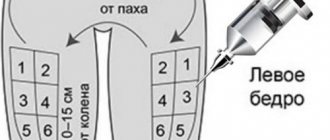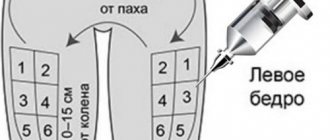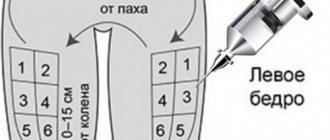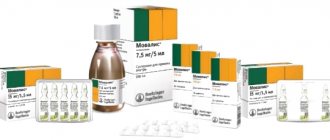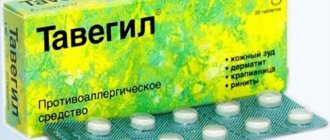In what cases are vitamin B12 injections prescribed? It is important to consider how to correctly determine the dosage and what possible side effects.
B12 (cyanocobalamin) is a vitamin that is rightfully considered key for the body. Its action is aimed at strengthening the immune system, regulating blood pressure, accelerating protein synthesis and normalizing sleep. To increase the effectiveness of the drug, it is prescribed in ampoule form. How to inject vitamin B12? What is the effect of cyanocobalamin on the body and what contraindications are important to remember when taking it? Each of the issues requires detailed discussion.
Indications for use
In medical practice, vitamin B12 (injections) has found wide use and is prescribed in the following cases :
- Polyneuritis, neuralgia and radiculitis.
- Chronic anemia developing due to a lack of cyanocobalamin.
- Kidney failure and liver cirrhosis.
- Peripheral nerve injuries, cerebral palsy.
- For prophylaxis when prescribing vitamin C, biguanides, PAS in an increased dosage.
- Alcoholism, prolonged feverish states.
- Skin diseases - atopic dermatitis, photodermatosis, psoriasis and others.
- Pathologies of the intestines and stomach associated with impaired absorption of B12.
- Tumors of the intestines and pancreas.
- Infectious diseases and stress conditions, kidney pathologies.
- Down's disease, funicular myelosis.
Instructions for use CYANOCOBALAMIN
Adults.
SC for Addison-Birmer anemia - 100-200 mcg/day every other day; for funicular myelosis, macrocytic anemia with dysfunction of the nervous system - 400-500 mcg/day in the first week - daily, then at intervals between administrations of up to 5-7 days (folic acid is prescribed at the same time); during the period of remission, a maintenance dose of 100 mcg/day 2 times a month, in the presence of neurological phenomena - 200-400 mcg 2-4 times a month.
For acute posthemorrhagic and iron deficiency anemia - 30-100 mcg 2-3 times a week, for aplastic anemia - 100 mcg until clinical and hematological improvement occurs.
For diseases of the central and peripheral nervous system, neurological diseases with pain, it is administered in increasing doses - 200-500 mcg/day until pain relief, then 100 mcg/day for 2 weeks. For traumatic lesions of the peripheral nervous system - 200-400 mcg every other day for 40-45 days.
For hepatitis and cirrhosis of the liver - 30-60 mcg/day or 100 mcg every other day for 25-40 days.
For acute radiation sickness, diabetic neuropathy - 60-100 mcg daily for 20-30 days.
For funicular myelosis, amyotrophic lateral sclerosis, multiple sclerosis - 15-30 mcg intralumbarally, and with each subsequent injection the dose is increased (50, 100, 150, 200 mcg). Intralumbar injections are given every 3 days, a total of 8-10 injections are required per course. During the period of remission in the absence of manifestations of funicular myelosis, 100 mcg twice a month is prescribed for maintenance therapy, in the presence of neurological symptoms - 200-400 mcg 2-4 times a month.
To eliminate cyanocobalamin deficiency, the following is administered intramuscularly or intravenously:
- for treatment 1 mg daily for 1-2 weeks, maintenance dose 1-2 mg from 1 time per week to 1 time per month;
- for prevention - 1 mg once a month. The duration of treatment is determined individually.
Children.
Administered subcutaneously at a dose of 1 mcg/kg, the maximum daily dose is 100 mcg. For nutritional anemia and anemia in premature infants - subcutaneously 30 mcg per day daily for 15 days, for aplastic anemia - 100 mcg until clinical and hematological improvement occurs.
For degenerative conditions after illness, Down's disease and cerebral palsy - 15-30 mcg subcutaneously every other day.
For hepatitis and cirrhosis of the liver, take 30-60 mcg/day or 100 mcg every other day for 25-40 days.
Doses and regimen of use depend on the pathology and range from 30 mcg to 100 mcg/day. The 500 mcg/ml dosage form is not used in children under 3 years of age.
The role of cyanocobalamin in the body
Vitamin B12 injections have the following effects :
- Accelerates the production of leukocytes, which take part in the destruction of foreign and dangerous elements to the body. Thanks to this action, the immune system is strengthened.
- Eliminates depression, helps fight stress, improves memory and normalizes brain activity.
- Increases the quality of sperm and their activity in representatives of the stronger sex.
- By reducing the volume of incoming oxygen, it improves the ability of cells to “absorb” oxygen from the blood plasma. This function is useful when diving or holding your breath.
- Protein production. Anabolic processes take place with the participation of cyanocobalamin. That is why the vitamin is recommended for athletes during the period of muscle growth.
- Normalization of the sleep-wake cycle. Regular intake of B12 helps the body adapt to cycle changes and relieves insomnia.
- Pressure regulation. Cyanocobalamin returns blood pressure to normal during hypotension.
Contraindications
Vitamin B12 (injections) is not recommended in the following situations:
- Pregnancy (allowed by doctor's decision). Studies have shown the risk of teratogenicity of cyanocobalamin when taken in high dosages.
- Hypersensitivity to the active substance.
- Erythrocytosis, erythremia and thromboembolism.
- Baby feeding period.
Prescribed in limited doses (after consultation with a doctor) in the presence of the following problems:
- angina pectoris;
- tumors (malignant and benign);
- cyanocobalamin deficiency;
- tendency to thrombosis.
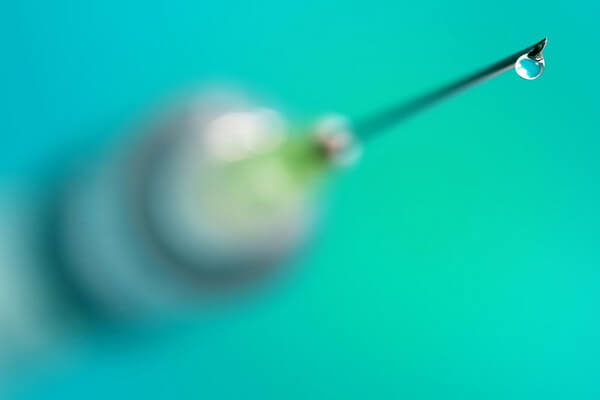
How to give injections
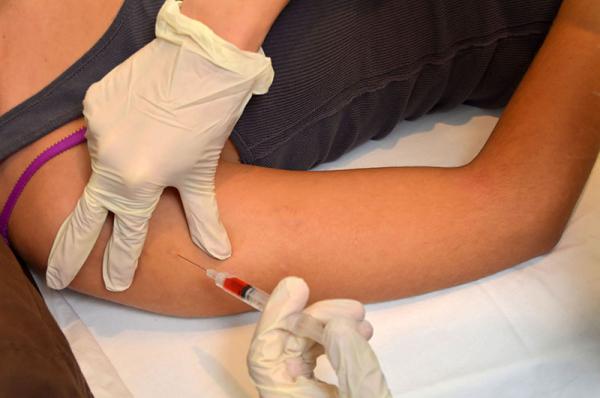
Vitamin B12 injections
can be done in different ways:
- subcutaneously;
- intramuscularly;
- intravenously;
- into the spinal cord.
The instructions say that cyanocobalamin cannot be used simultaneously with drugs that increase blood clotting, as well as with vitamins B1 and B6. If you have an allergy to B1, then B12 can make it worse.
Administer the drug intramuscularly and intravenously
you can do it yourself. For injection into the spinal cord, you should consult an experienced doctor.
Return to article content
Dosage
Before injecting B12, you should study the instructions, consult with your doctor and determine the dosage that suits you. The drug is taken :
- orally (inside);
- under the skin;
- intravenously;
- intramuscularly;
- intralumbarally (into the spinal canal).
The dosage depends on the type of disease:
- Addison-Biermer anemia - 150-200 mcg per day , once every 2 days.
- Funicular myelosis, macrocytic anemia - 400-500 mg for the first seven days (taken every day). Next, intervals of 5-7 days are made between injections. To increase efficiency, folic acid is prescribed in combination with B12. During remission, the dosage is reduced to 100 mcg per day with a dosage frequency of twice a month.
- Iron deficiency or posthemorrhagic anemia - 30-100 mcg . Frequency of administration: every other day.
- Aplastic anemia - 100 mcg per day . The drug is taken until a noticeable improvement in the body’s condition occurs.
- Central nervous system disorders - 300-400 mcg every two days . The course is 40-45 days.
- Liver cirrhosis or hepatitis - 40-60 mcg per day or 100 mcg every two days. The course is 25-40 days.
- Radiation sickness - 50-100 mcg . Taken every day, course 20-30 days.
- Aminotrophic lateral sclerosis - 20-30 mcg with a gradual increase in dosage to a level of 220-250 mcg .
- To eliminate cyanocobalamin deficiency (intramuscular, intravenous) - 1 mcg once a day . Course 7-14 days. For preventive purposes, the drug is injected once a month at a dosage of 1 mcg.
- Premature babies, nutritional anemia in childhood - 30 mcg per day every day for 15 days.
- Cerebral palsy, Down's disease, dystrophy (childhood) - 20-30 mcg, every two days . The drug is injected under the skin.

Cyanocobalamin treatment regimen
When vitamin B12 is prescribed, instructions for use
will help you calculate the correct dosage. The treatment plan looks like this:
- For the prevention of anemia and vitamin deficiency - from 200 to 500 mcg per day. The course of treatment ranges from 7 to 15 days.
- For the treatment of diseases of the central nervous system - 200 mcg per day daily for the first 3 days. Then 300 mcg daily for 4 days.
- If cyanocobalamin is used in complex therapy, the dosage is from 200 to 500 mcg per day.
Take vitamin B12
It is necessary only in the dosage recommended by the doctor. It is not recommended to use the drug on your own, since it is quite difficult to determine an individual treatment regimen.
Return to article content
pharmachologic effect
Many people are interested in why B12 injections are given and what they give. The main advantage of this form of the substance is its rapid entry into the blood, after which the drug has a homeopathic and metabolic effect. In the body, the element is converted into a coenzyme form, namely cobamamide and adenosylcobalamin. The substances mentioned belong to the active forms of cyanocobalamin and are involved in the production of vital enzymes in the body.
Vitamin B12 is part of many enzymes, including those that reduce B9 into titrahydrofolic acid, and also has powerful biological activity. The effect of the substance is also aimed at accelerating the formation of red blood cells, the accumulation of their compounds, as well as increasing tolerance to hemolysis. In addition, the drug is useful for the circulatory system by its ability to accumulate sulphahydral groups in erythrocyte compounds. When taken in higher dosages, prothrommin activity increases and cholesterol levels decrease. After completing the course, the functioning of the nervous system is normalized, and the ability of tissues to recover increases.
What is vitamin B12 for?
First of all, vitamin B12 is needed for the normal functioning of the hematopoietic system, since the substance is necessary for the maturation of red blood cells. Helps prevent anemia. Also cyanocobalamin:
- takes part in providing the body with energy;
- necessary for the reproduction of cells in the bone marrow, nervous system and gastrointestinal tract;
- helps the nervous system work smoothly;
- ensures iron absorption;
- has an analgesic effect;
- needed for metabolism (participates in the metabolism of proteins, fats and carbohydrates);
- serves as a prevention of Alzheimer's disease, depression, schizophrenia, and cardiovascular pathologies.
Side effects and special instructions
Knowing the benefits of vitamin B12, why cyanocobalamin is injected and what the dosage should be is often not enough. It is important to consider the side effects of taking:
- Increased agitation.
- Allergic reactions, sometimes hives.
- Pain in the heart area, rapid heartbeat.
- Violation of purine metabolism, hypercoagulation.
special instructions:
- Lack of cyanocobalamin can be confirmed diagnostically before prescribing the drug. This is caused by the substance's ability to hide folic acid deficiency.
- Monitoring peripheral blood parameters. On days 6-8 after the start of treatment, it is worth determining the iron level and the number of reticulocytes. In addition, it is important to keep the color indicator, hemoglobin and red blood cell volume under control. The check is carried out within 30 days once or twice a week. After 3-4 tests are enough within 30 days. If the level reaches 4-4.5 million/μl (for red blood cells), checks are carried out less frequently - once every 5-6 months.
- In the presence of angina pectoris, a tendency to form blood clots, as well as during lactation and pregnancy, it is prohibited to exceed the dosage.

Vitamin B12 solution
Available in ampoules of 10 pieces per package. 1 ml contains 0.5 mg of cyanocobalamin.
Indications for prescribing vitamin injections are:
- anemia due to chronic lack of vitamin B12;
- iron deficiency anemia, as well as caused by severe bleeding (as an additional treatment);
- Cerebral palsy and Down syndrome;
- anemia caused by drug or toxin poisoning;
- liver pathologies (cirrhosis, hepatitis);
- skin diseases (neurodermatitis, psoriasis, dermatitis);
- radiculitis and neuralgia.
The solution is injected into the spinal canal, vein or muscle, under the skin, and also taken orally.
The dosage should be selected by the doctor based on the severity of the condition and the age of the patient.
According to instructions:
- in case of vitamin deficiency and anemia due to it, administration of 100/200 mcg once every two days is indicated;
- for anemia due to bleeding or iron deficiency - 30-100 mcg twice or thrice a week;
- children are prescribed 30-100 mcg per day, depending on the indications;
- anemia with neurological pathology is treated with daily injections of 400-500 mcg for a week, then once every five to seven days.
Therapy can cause allergies, increased heart rate, diarrhea, and nervous excitement.
In the form of a solution, vitamin B12 is contraindicated in pregnant and lactating women, with thromboembolism, and increased production of red blood cells.
Lack of cyanocobalamin must be confirmed by analysis.
The price of a package of 10 ampoules starts from 30 rubles, and is available with a prescription from a doctor.
Interaction
It is not recommended to combine cyanocobalamin in liquid form and ascorbic acid in one syringe. A similar requirement applies to salts of heavy metals, as well as other B vitamins. The reason is that the cobalt ion, which is contained in B12, destroys and reduces the effectiveness of the substances mentioned above.
Taking colchicine, salicylates, aminoglycosides and antiepileptic drugs leads to a deterioration in the absorption of B12. When taken together with thiamine and in the presence of allergies, the effect of the latter is enhanced. In the case of parental use, chloramphenicol reduces the hematopoietic effect of B12 (stimulation of erythro- and leukopoiesis) in anemia.
Concomitant use with hormonal contraceptives is not recommended. In this case, the concentration of vitamin B12 in the blood decreases. Also, combination with medications whose action is aimed at improving blood clotting is not allowed.
The role of vitamin B12 in the body
Cyanocobalamin (vitamin B12)
was first opened in 1948. Scientists isolated a new substance from raw liver and prescribed it to treat pernicious anemia.
Over the past 70 years, cyanocobalamin has been well studied by scientists and doctors, as a result of which it was possible to establish its effect on the body:
- blocking stress hormones;
- improvement of blood clotting;
- amino acid synthesis;
- reducing the amount of cholesterol in the blood;
- detoxification of the body during alcoholism;
- improving liver function.
Cyanocobalamin helps athletes withstand heavy loads, accelerates weight loss and prevents the development of cardiovascular diseases.
It plays a special role in the functioning of the central nervous system. The vitamin complements the main therapy for cerebral palsy in children, Down's disease, intercostal neuralgia, etc.
Return to article content
How to inject B12 correctly?
Self-prescription of the drug cyanocobalamin is dangerous to health, so you should act only on the recommendation of a doctor. It is also important to know how to inject vitamin B12 correctly, and what standards should be followed first:
- Get all the information, which concerns the dosage and contraindications of the drug. If you have an allergic reaction to cobalt or cobalamin, injection is prohibited. Tell your healthcare professional if you have any of the following problems:
- Colds or allergies.
Liver or kidney diseases.
- Lack of folic acid or iron.
- Infectious diseases.
- Taking medications that affect the bone marrow.
- Pregnancy or plans to have a child.
- Decide on the form of cyanocobalamin . In the case of taking vitamins B 12 in injections, the benefit lies in the rapid entry into the blood and covering the deficiency of cyanocobalamin (especially important for anemia). Injections are also prescribed if, for various reasons, the vitamin is poorly absorbed from the gastrointestinal tract.
- Get vitamin B12 dosage recommendations . If the doctor decides on the advantage of the injectable form, he also determines the required dosage. During the course, it is worth taking blood tests to monitor changes in its composition and respond to changes in a timely manner.
- Choose an injection site. It all depends on a number of factors - the availability of appropriate skills, age, dosage and type of disease. The following options are available:
- Shoulder. Injections in this area are suitable for people in middle or young age. In old age, it will be difficult to give such an injection on your own. If the dosage exceeds 1 ml per day, then you should choose another injection site.
- Hip. This part of the body is preferred by people who give injections themselves or who administer cyanocobalamin to children under five years of age. The advantage of injecting into the thigh is the large volume of muscle and fat in this area. In this case, the injection is made into the lateral femoral muscle, located midway between the groin area and the kneecap, so it is impossible to miss.
- Buttocks. The injection is usually given in the upper part of the gluteal muscle (left or right). You should trust only a medical professional, because there is a large accumulation of blood vessels and the sciatic nerve passes through. If the injection is given incorrectly, there is a high risk of damage.
- Outer thigh. The injection in this place is suitable for adults and children. This area is located on the side, near the pelvic bone. Many people choose this option because there is no risk of touching nerves and blood vessels.
- Decide on the injection method. There are two main methods to choose from:
- Intramuscular injection. This method is the most common. In this case, the needle is inserted at a right angle and inserted deeply into living tissue. Cyanocobalamin immediately enters the muscles and enters the blood within a few minutes.
Subcutaneous injection. Here the drug is injected with a syringe at an angle of 45 degrees. The needle is inserted shallowly, and at the moment of injection the skin is slightly pulled away from the muscles. With this injection option, the optimal place is considered to be the shoulder.
- Prepare everything you need for injection. Here you will need:
- vitamin B12;
- cotton balls;
- syringe with needle;
- adhesive plasters;
- container for disposal of needles;
- alcohol.
- Clean the injection site . To do this, remove clothing to the side and provide access to the skin. Then dip the cotton wool in alcohol and wipe the area where the injection will be given. Treat the skin using circular movements. Wait until the surface is dry.
- Turn the container with cyanocobalamin , remove the needle from the packaging and remove the protective cap.
- Pull back the syringe plunger to draw the required volume of liquid. Then insert the needle into the bottle, push the air out of the syringe and draw out the required volume of liquid. Then tap the syringe so that the air bubbles rise up.
- Give the injection. It is important to adhere to the following rules:
- Pull the skin to facilitate the introduction of the composition.
- Deepen the needle at the required angle and press the plunger until the liquid is completely squeezed out of the syringe. It is advisable that the muscles are relaxed at this moment.
- When injecting B12, monitor the contents of the syringe - there should be no blood in the container.
- Lower the skin and remove the needle. It is recommended to remove the needle at the same angle.
- Wet the injection site with a special swab, then clean the surface and stop the bleeding.
- Place an adhesive plaster over the injection site to protect against harmful substances entering the bloodstream.
- Secure the lid onto the coffee can. For these purposes, use adhesive tape. Then cut a slit in the lid large enough for the needle to pass through. The product is then disposed of.

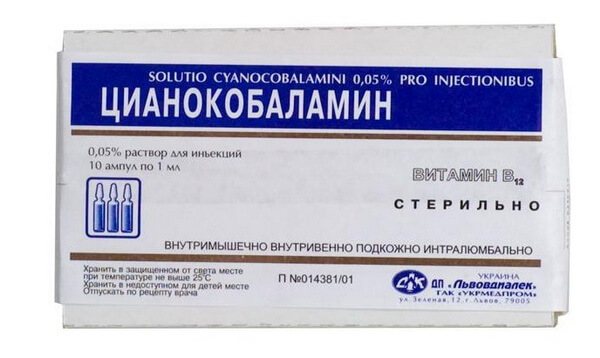
Today it is not difficult to find information about why vitamin B6 and B12 are injected, as well as what the dosage should be. Despite this, it is prohibited to act independently and take the drug without a doctor’s prescription. Otherwise, there is a risk of negative effects of the vitamin on the body and the presence of side effects.
